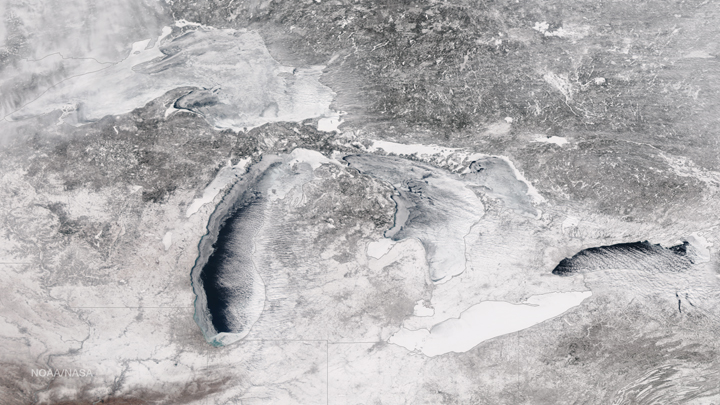TORONTO – Though the winter started off fairly mild in Ontario, February has been brutally cold. And you can just look to the Great Lakes for proof.

According to the Great Lakes Environmental Research Laboratory, as of Feb. 23, the ice cover on the Great Lakes totals 85.6 per cent. Now, remember the long, brutal cold that last winter brought?
Well, believe it or not, the lakes were only 61 per cent frozen on this date.
Looking at the data, you can see that the ice concentration levels began climbing after Feb. 9.
On Jan. 1, the ice concentration was just 5.65 per cent. By Feb. 1, it had jumped up to almost 38 per cent. And that’s due to the frigid Arctic air that has gripped the province since the beginning of the month. For the month of February, the temperature has not once reached above 0 C. The closest we came was on Feb. 4 when the mercury climbed to a balmy -1.4 C.
READ MORE: Great Lakes nearly covered with ice for 1st time since 1994
The worst part is, the relative warmth of the lakes help to moderate temperatures. That’s why, usually, southern Ontario doesn’t reach the frigid temperatures seen farther to the west. But with the lakes frozen no moderation is taking place.
- Budget 2024 failed to spark ‘political reboot’ for Liberals, polling suggests
- Peel police chief met Sri Lankan officer a court says ‘participated’ in torture
- Wrong remains sent to ‘exhausted’ Canadian family after death on Cuba vacation
- Liberals having ‘very good’ budget talks with NDP, says Freeland
Last year, the ice cover on the Great Lakes peaked at 92.19 per cent on March 6. Superior reached 95.74 per cent on March 5.
The last time the lakes were almost frozen over was in 1994 when it reached 94 per cent. The record was 94.7 per cent set in 1979.





Comments